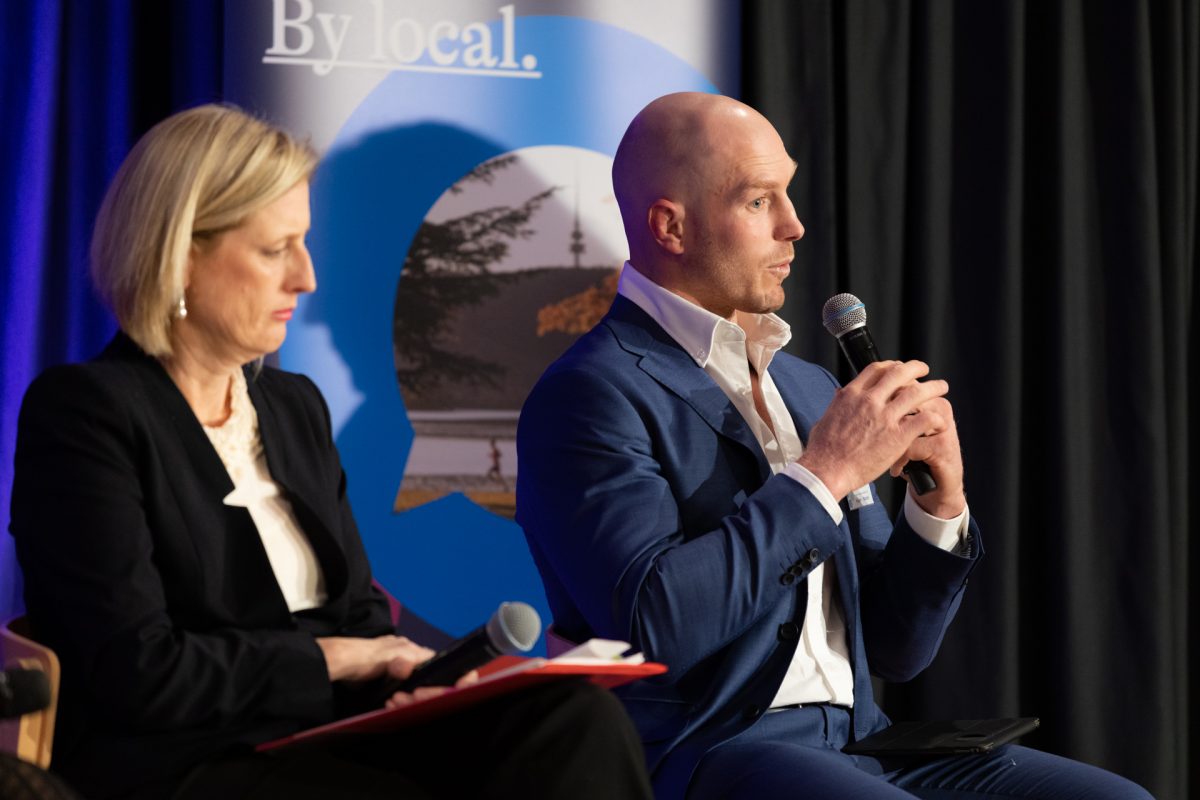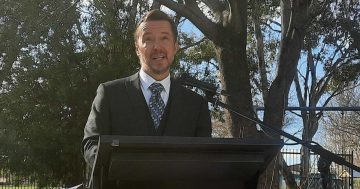
Now-Senator David Pocock campaigned to increase welfare payments during the 2022 election. Photo: Michelle Kroll.
Here we go again. A new report says welfare payments should be increased by 40 per cent, and the Federal Government says there’s no money to pay for it.
It happens every year. It’s just the actors who change. In 2019, Bill Shorten promised to “raise the rate”, and now, in 2023, he and the federal Labor Government say the cupboard is bare.
Balance of power Senator David Pocock, in his typical well-meaning way, has now assumed the advocacy mantle but will likely have to settle for a fig leaf single-digit increase above inflation. The Coalition is staying mum.
So when will we try for real reform to deliver better outcomes?
I know what it’s like to live below the poverty line, even temporarily. My first few years were spent living in a caravan with my teenage parents. I observed the backbreaking work and often seven-day weeks my dad did to get ahead, and then losing his job and applying for the dole in Keating’s recession.
As an adviser to a reformist Community Services Minister in NSW, I’ve seen more disadvantage than I ever knew existed – up close and vicariously – through the eyes and reports of caseworkers.
Senator Pocock put job seekers front and centre when he said: “You talk to people who are on JobSeeker and Youth Allowance who want to get back into the workforce, and instead, they’re having to decide whether to buy food or to pay for their prescription at the pharmacy.”
No reasonable, ordinary Australian (whether from affluent Canberra or a rural township in Queensland) would disagree with the Senator there. Australians are generous people and willingly give a helping hand to someone down on their luck.
Australians also genuinely believe in reward for effort. Australians are egalitarian, but we work hard and value the contributions of others who do too. There’s a natural disinclination to share hard-earned income into perpetuity with those who are capable of earning their own.
As someone who has bootstrapped multiple successful small businesses, it is frustrating to advertise jobs paying award rates and above, block out my diary for up to 10 interviews in a day, only to have seven in 10 applicants ghost the interview without so much as an email or call.
If you’re an employer or small-business owner reading this, you understand what’s happening here in a way the policy wonks and politicians probably don’t.
Most sensible Australians agree transitioning people off welfare and into jobs is a good outcome for not only the economy but the individuals themselves. Intergenerational welfare dependence benefits nobody.
We also surely agree that people genuinely searching for a job after losing theirs should be supported to find another. Avoiding the slide into poverty and long-term unemployment that can happen quite quickly (think losing rental accommodation, having to sell a car to feed the kids) is critical. Few taxpayers love the idea of substantially increasing Newstart into perpetuity.
Consider this: the median duration of job search in Australia in February this year was eight weeks (ABS data). The long-term average, including a spike to 27 weeks at the height of COVID, is around 15 weeks.
While our unemployment payment may be low by OECD standards, it is dramatically out of step in its duration.
While practically indefinite in Australia, it is capped at six months in countries like the UK, the US and Israel. Even Sweden is only 14 months. Data from the US suggests the vast majority of job seekers find their next job in the fifth and sixth month, right when unemployment insurance runs out. This could indicate that there is a causal link between fixed-term benefits and job-seeking success.
If we know how long it takes to find a new job, and avoiding poverty while job seeking makes long-term unemployment less likely, why couldn’t we raise the rate for every newly unemployed person for a period that is fiscally responsible but also based on the available data?
Reformist ministers such as Ed Husic are working on digitising government to make the wealth of data more useful, so why not apply it to a properly ambitious reform? (And I’m not talking about just a re-skin of the MyGov app.)
Newstart for a single person with no kids is $693.10 a fortnight. What if every newly unemployed person from 1 July this year received double that amount for eight weeks while they looked for work, thereafter reverting to the base Newstart rate?
If advocates for increasing Newstart, like Senator Pocock, are genuinely concerned primarily with helping people avoid dropping below the poverty line while they are temporarily between jobs, then a targeted proposal to support those people generously and specifically rather than a 40 per cent increase to all Newstart recipients should be on the table.
If job search durations increase again (as unemployment rates go up), instead of the old clunky way of adjusting welfare rates for everybody, couldn’t the temporary jobseeker top-up be extended an extra few weeks as a fiscal stabiliser? Obama did exactly that in the US when the GFC hit.
Australians will support policies that serve a genuine need and appeal to their senses of both a fair go and mutual obligation. It’s past time we looked beyond the annual, predictable, tiresome polarising debate over how much to increase Newstart for everybody and explored serious reforms that could make a real difference not only to temporary job seekers, but to taxpayers and employers as well.
Nick Tyrell is the managing director of GoBoat and a former adviser to Gladys Berejiklian.














